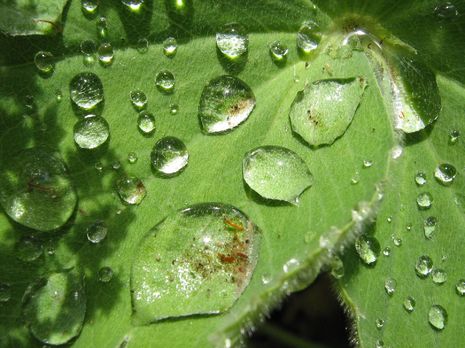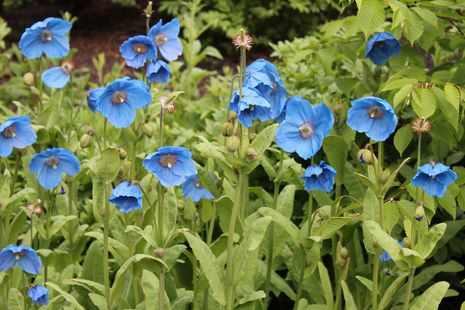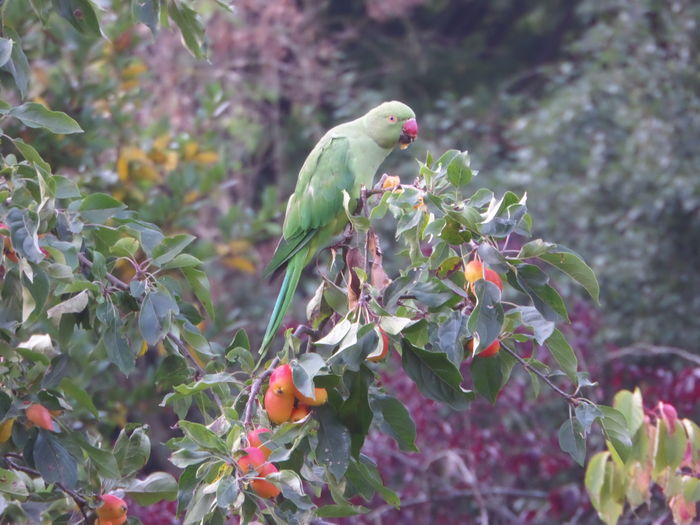Lessons from the plants with real-life superpowers
From everlasting colours to self-cleaning leaves, Rachel Tan explores a variety of amazing plant superpowers and their potential applications.

In the 2020 American superhero film Project Power, the pill “Power” gives humans abilities derived from other animals for five minutes – chameleon powers give one the ability to camouflage; polar bear powers grant thermoregulation abilities in freezing temperatures. Now imagine if the pills adapted not only the characteristics of animals, but also that of plants, into the superheroes’ powers. From superhydrophobicity to fire resistance, there is so much we can learn from plants. While many of us are familiar with the Venus Flytrap and Mimosa, there are many other amazing plants that we have yet to explore.
Imagine a coating of everlasting colour that appears different from different angles. The colour blue is highly desirable in the plant world as it attracts insects and other animals for seed dispersal. However, a natural blue pigment doesn’t exist, so plants have to adopt other ways of achieving this colour. One way to achieve this, employed by the Meconopsis grandis or blue poppy, is by altering the acidity. The blue pigment is actually a metal complex pigment involving Ferric (Fe3+) ions at an acidic pH. Alternatively, Pollia condensata berries produce their vibrant blue colour by refracting light. The nanosized cellulose strands are arranged in helical layers which interact with each other, scattering light and producing the iridescent blue colour. As a result, the fruit’s colour doesn’t fade even after many years. In fact, a specimen at the Kew Botanical Gardens in London that was collected from Ghana in 1974 still retains its vibrant blue hue. If we could adapt these structural arrangements when inventing iridescent blue dye or paint, the possibilities are endless.

Imagine being able to survive fires. After all, we’ve all heard of forest fires burning millions of acres of wildlife across the world. The Eucalyptus globulus, native to southeastern Australia, has grown not only to survive, but to thrive in forest fires. Some argue that the eucalyptus tree actually contributes to the spreading of fire, while others claim that they simply resist fire. What we do know is that eucalyptus leaves are oily and generate lots of volatile and combustible oils when burnt. An estimated 70% of the energy released in the Oakland fire from the combustion of vegetation was due to eucalyptus alone. The fire actually helps them displace other native vegetation and drop their seeds onto fresh soil, where they expand due to the heat. After the fire, existing trees are able to regenerate from epicormic buds, granting them long-term survivability.
“Instead of exploiting Mother Nature’s resources, why don't we protect them, so we can enjoy them for many more years to come?”
Imagine if your body had a defence mechanism against harmful Ultraviolet radiation from the sun. We stand in sheltered walkways, use umbrellas, and apply sunscreen religiously, all to avoid Ultraviolet-B (UV-B) radiation, which can damage both plant and animal DNA. How do plants, being incapable of moving away from sunlight, defend themselves against these UV-B rays? Many plants have a group of aromatic chemicals, sinapate esters, which sit in the upper cell layers of their leaves. Sinapoyl malate, one type of sinapate ester, provides the majority of the protection by absorbing all lengths of UV-B radiation. Roman Ulm and his team have identified a UV-B photoreceptor, UVR8, which is activated upon absorbing UV-B rays. These photoreceptors accumulate in the nucleus of the cell and induce a series of physiological responses to help the cell acclimatise and survive, such as repairing DNA damaged by UV exposure. Research is currently being done on Arabidopsis thaliana, a model plant, to further understand this mechanism. How can we use these findings then? Commercial sunscreens already make use of cinnamates, a closely related natural substance said to be as effective as sinapoyl malate. This discovery, however, could potentially be used to develop plants that are even more resistant to UV radiation – something that could be useful in a future plagued by more heatwaves as a result of climate change.
Imagine a coating that repels water, potentially allowing you to float, or even walk on water. Some plants have self-cleaning properties thanks to their superhydrophobicity. The lotus effect, first discovered in the sacred lotus Nelumbo nucifera, and shared by many other plants such as the Common Nasturtium (Tropaeolum majus), causes water to run off the leaves, carrying any dirt along with it. This is important as dirt blocks sunlight from reaching the surface of the leaf and reduces the rate of photosynthesis. This effect is accomplished through the structure of the cuticle. Lotus leaves have a rough microscale surface due to microscopic wax crystals. The pockets of air trapped on the surface result in a reduced area of contact between the water and the leaf. Water forms spheres, which roll off the leaf due to gravity, taking any attached dirt with them. The lotus effect has already inspired many surface finishes, self-cleaning tiles and fabrics, such as the intelligent paint StoColor Lotusan.
Clearly, Mother Nature has lots to offer, and there are many things yet to be discovered. As the gift that keeps on giving, instead of exploiting Mother Nature’s resources, why don't we protect them, so we can enjoy them for many more years to come?
 News / CUP announces funding scheme for under-represented academics19 December 2025
News / CUP announces funding scheme for under-represented academics19 December 2025 News / Cambridge welcomes UK rejoining the Erasmus scheme20 December 2025
News / Cambridge welcomes UK rejoining the Erasmus scheme20 December 2025 Film & TV / Timothée Chalamet and the era-fication of film marketing21 December 2025
Film & TV / Timothée Chalamet and the era-fication of film marketing21 December 2025 News / SU reluctantly registers controversial women’s soc18 December 2025
News / SU reluctantly registers controversial women’s soc18 December 2025 News / News in Brief: humanoid chatbots, holiday specials, and harmonious scholarships21 December 2025
News / News in Brief: humanoid chatbots, holiday specials, and harmonious scholarships21 December 2025









